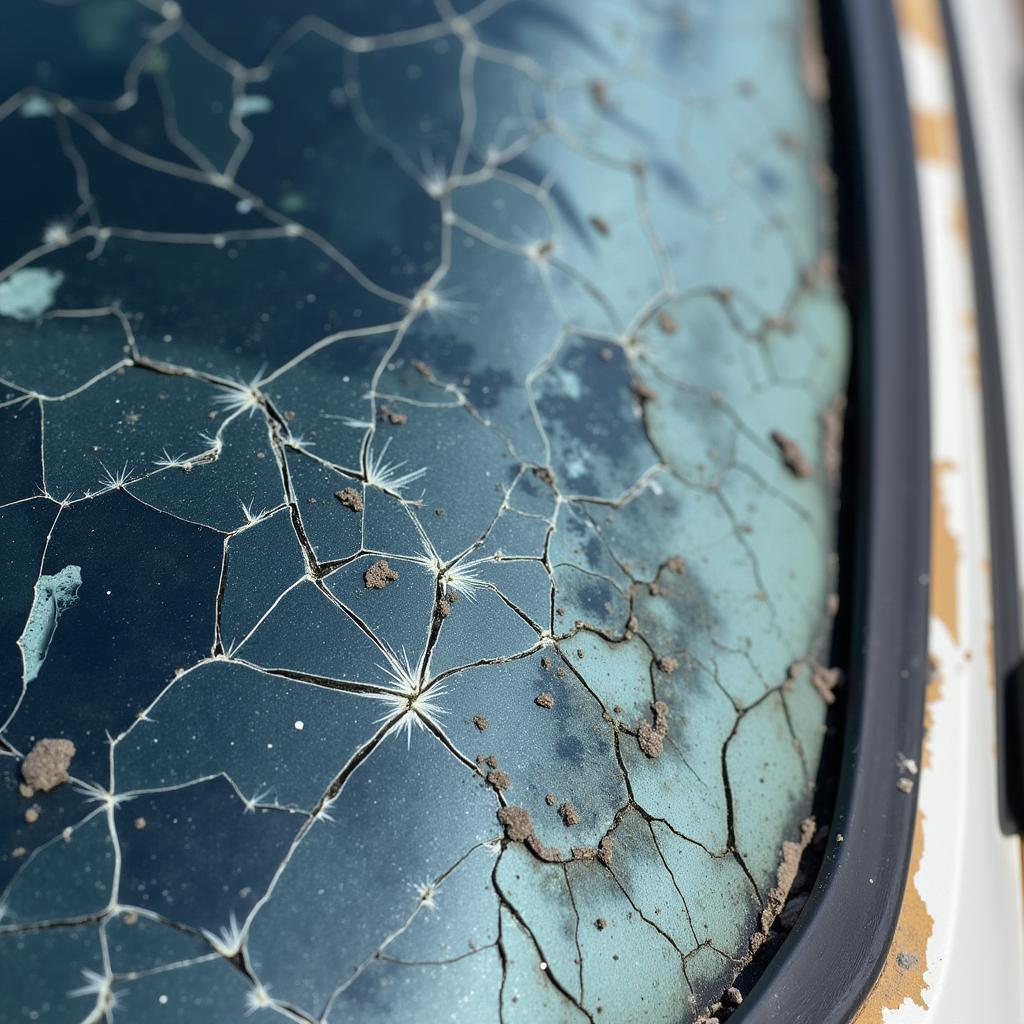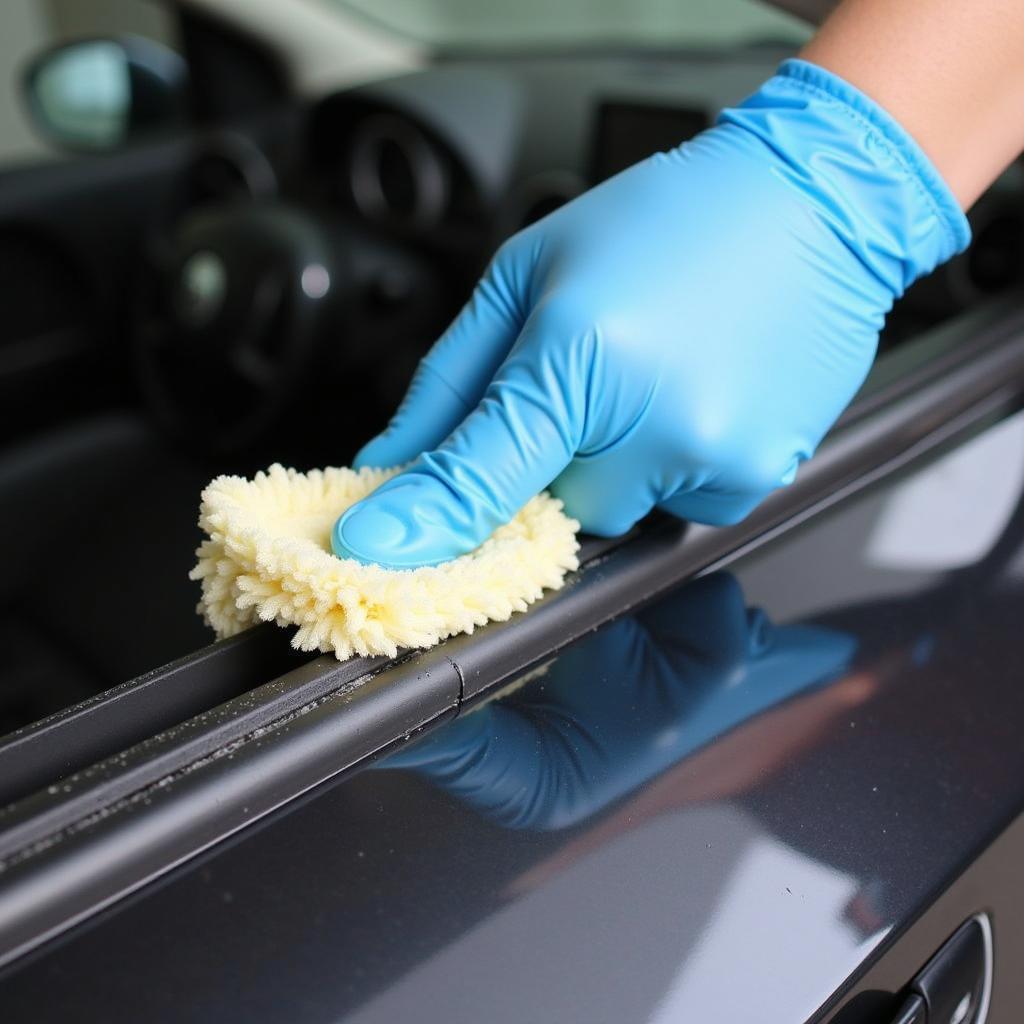Dealing with old, faded, and even cracking rubber window trim on your car? You’re not alone. This is a common problem for car owners, especially those with older vehicles or those frequently exposed to harsh weather conditions. The good news is that you can revitalize your car’s appearance with a bit of effort and the right approach. This comprehensive guide will walk you through restoring your car’s window trim to its former glory.
Understanding the Enemy: Why Does Rubber Trim Degrade?
Before diving into the detailing process, it’s helpful to understand why rubber trim deteriorates.
- UV Radiation: The sun’s ultraviolet rays are a primary culprit, breaking down the rubber’s structure and causing fading and cracking.
- Heat: Excessive heat accelerates the oxidation process, leading to dryness and brittleness.
- Ozone: This naturally occurring gas in the atmosphere can also contribute to the deterioration of rubber over time.
- Moisture: While some moisture is normal, prolonged exposure to water, especially standing water, can seep into the rubber and cause it to weaken.
- Lack of Maintenance: Regular cleaning and protection can significantly prolong the life of your car’s rubber trim. Neglecting this can accelerate wear and tear.
 Cracked and Faded Rubber Trim
Cracked and Faded Rubber Trim
Gathering Your Detailing Arsenal: Tools for the Task
Having the right tools and products makes all the difference in achieving professional-looking results. Here’s what you’ll need:
- Cleaning Solution: A dedicated car wash soap or a mild all-purpose cleaner is ideal. Avoid harsh chemicals or household cleaners that can further damage the rubber.
- Detailing Brushes: Soft-bristled brushes, including a toothbrush for tight spaces, are essential for gently scrubbing away dirt and grime.
- Microfiber Towels: These lint-free towels are perfect for drying and buffing the trim.
- Rubber Conditioner/Protectant: This is the key to restoring your trim’s deep black color and providing a protective layer against future damage. Look for products specifically designed for exterior rubber trim.
- Masking Tape: This will help protect surrounding areas like paint and glass from accidental contact with cleaning solutions or protectants.
- Gloves: Protect your hands from harsh chemicals and grime.
Reviving Your Rubber Trim: A Step-by-Step Guide
Now, let’s dive into the detailing process:
-
Preparation is Key: Start by thoroughly washing your car, paying special attention to the areas around the window trim. This will remove loose dirt and debris that could scratch the rubber during cleaning.
-
Masking for Protection: Use masking tape to protect adjacent surfaces like paint and glass from any accidental spills or overspray.
-
Deep Cleanse: Mix your cleaning solution with water according to the product instructions. Dip your detailing brush into the solution and gently scrub the rubber trim, working in small sections.
-
Rinse and Dry: Once you’ve cleaned all the trim, thoroughly rinse the areas with clean water, ensuring no cleaning solution residue remains. Use a microfiber towel to dry the trim completely.
-
Conditioning for Restoration: Apply a generous amount of rubber conditioner/protectant to a clean microfiber applicator pad or towel. Work the product into the trim, ensuring even coverage.
-
Buff to a Shine: Allow the conditioner to sit for the time recommended on the product label (usually 5-10 minutes). Then, use a clean microfiber towel to buff the trim to a rich shine.
 Restoring Rubber Trim Shine
Restoring Rubber Trim Shine
Prolonging the Life of Your Trim: Maintenance Tips
- Regular Cleaning: Aim to clean your car’s rubber trim at least every other wash.
- UV Protection: Park your car in the shade whenever possible, or use a car cover for extended periods of outdoor storage.
- Timely Touch-Ups: If you notice any fading or dryness, reapply a rubber conditioner/protectant to maintain the trim’s appearance and protection.
Frequently Asked Questions
Q: Can I use household products like WD-40 or olive oil on my rubber trim?
While some people use these products, they are not ideal and may offer only temporary results. Dedicated rubber conditioners/protectants are formulated to provide long-lasting protection and restoration.
Q: My rubber trim is severely cracked. Can I still restore it?
Deep cracks may be too severe to fully restore with conditioners. In these cases, replacing the trim might be the most effective solution.
Q: How often should I apply a rubber conditioner/protectant?
This depends on the product and your climate. Generally, applying every 3-6 months provides adequate protection. However, always refer to the manufacturer’s instructions.
Need More Help?
For personalized advice or assistance with your car detailing needs, our team of experts is just a message away. Contact us via WhatsApp at +1(641)206-8880 or email us at [email protected]. We offer 24/7 customer support to ensure your car receives the best care possible.

Leave a Reply